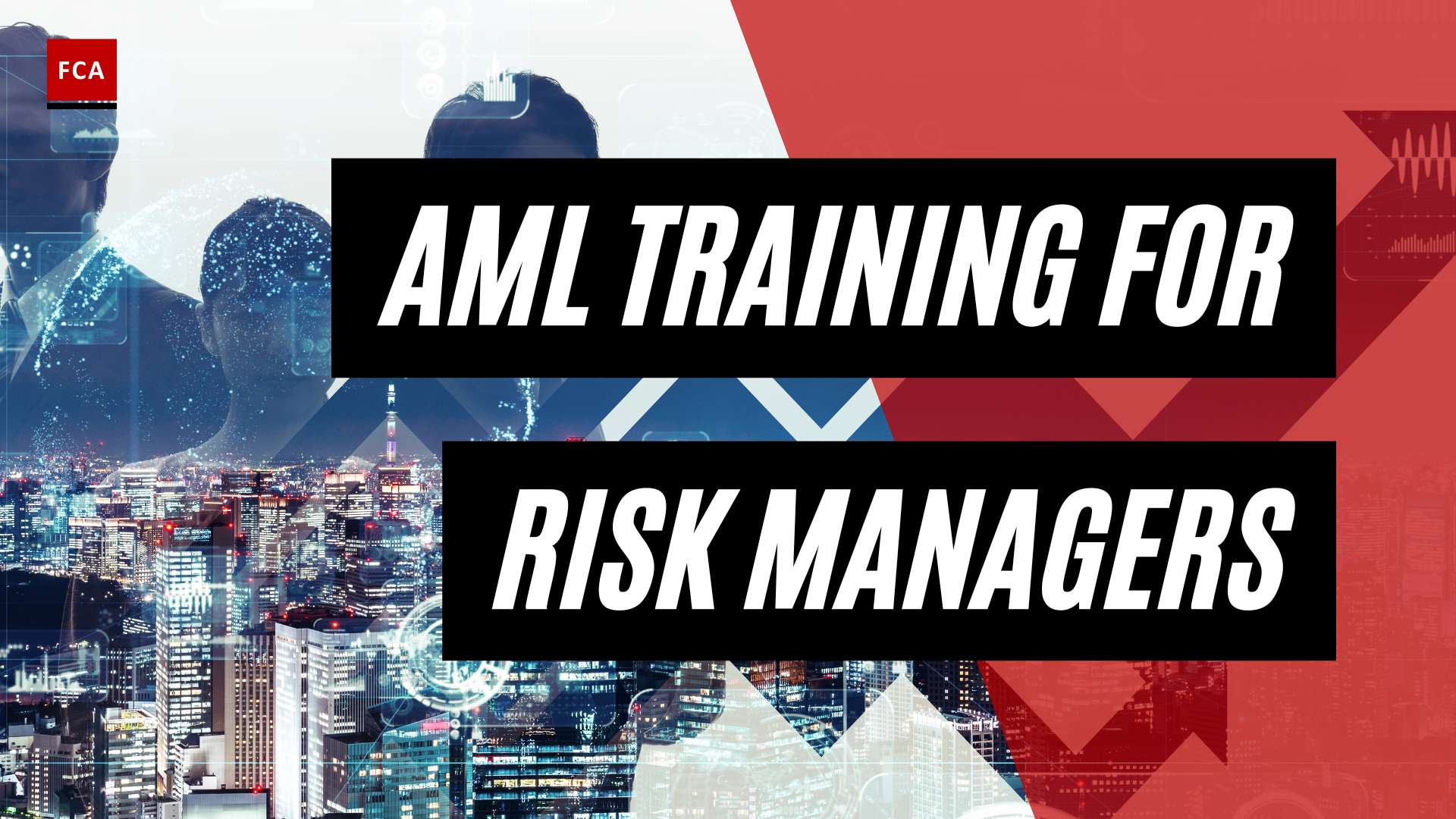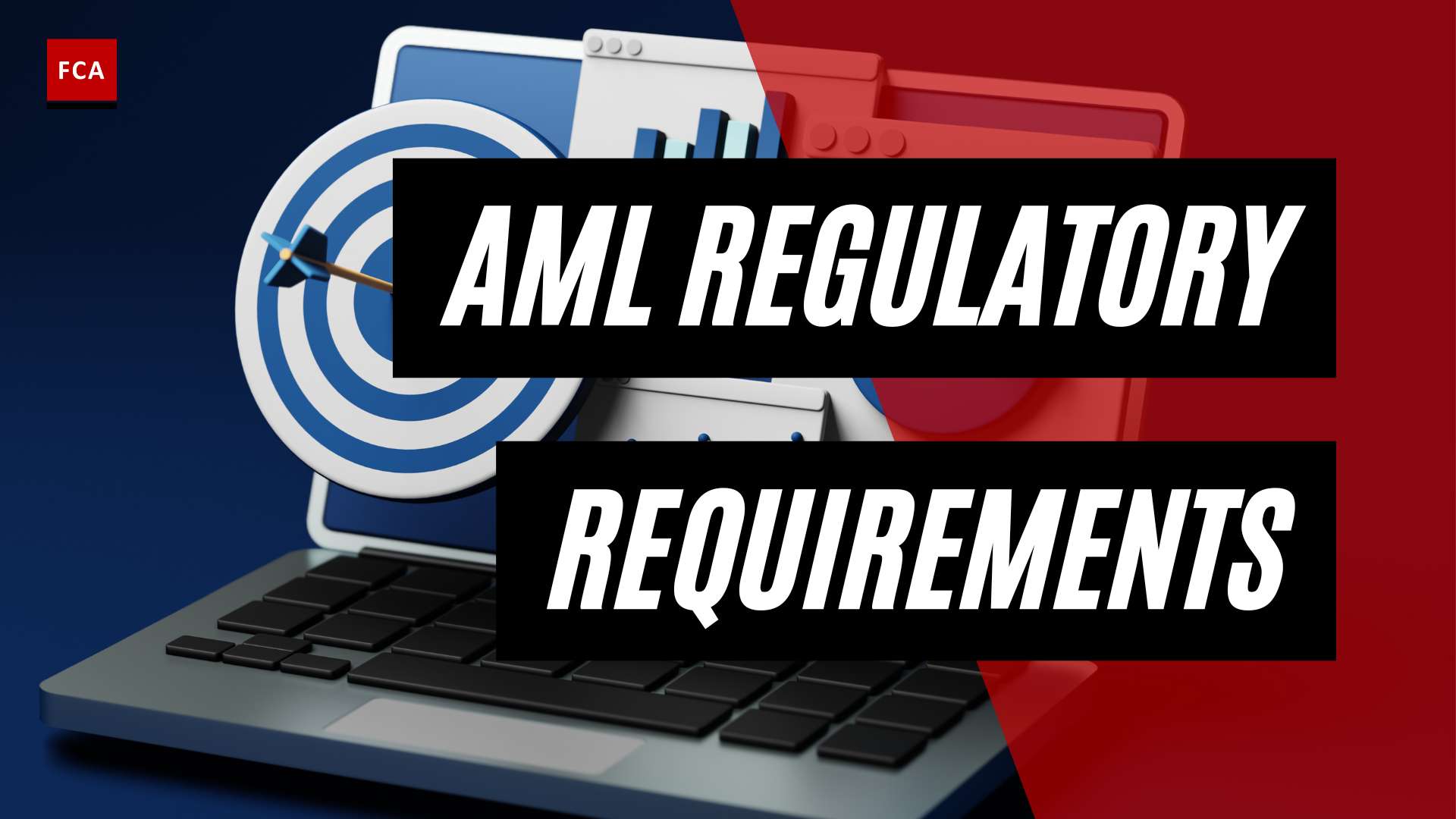AML Compliance Audits: Ensuring Regulatory Compliance
To uphold regulatory standards and combat financial crimes such as money laundering and terrorist financing, financial institutions must prioritize Anti-Money Laundering (AML) compliance audits. These audits play a crucial role in safeguarding institutions from hefty fines, reputational damage, and legal consequences that can arise from non-compliance with AML regulations (Financial Crime Academy).
The Importance of AML Compliance Audits
AML compliance audits are essential for financial institutions to ensure that they are adhering to regulatory requirements and identifying any suspicious activities that may indicate potential money laundering or other financial crimes. By conducting regular audits, institutions can assess the effectiveness of their AML programs, identify any gaps or weaknesses, and take corrective action promptly. This proactive approach helps prevent potential regulatory violations and strengthens overall risk management and governance within the institution (Financial Crime Academy).
Furthermore, AML compliance audits enhance transparency, accountability, and adherence to regulatory standards. By maintaining a comprehensive audit trail, financial institutions demonstrate their commitment to combating financial crimes, protecting their integrity, and safeguarding their reputation. These audits also provide an opportunity to educate employees on AML best practices, ensuring that the institution’s staff is well-equipped to identify and report suspicious activities (Financial Crime Academy).
Consequences of Non-Compliance
The consequences of non-compliance with AML regulations can be severe for financial institutions. Failure to comply can result in significant penalties, loss of operating licenses, and even criminal charges against the executives of the company. Regulatory bodies, such as the Financial Action Task Force (FATF) and national financial crime enforcement agencies, impose fines and sanctions for non-compliance. These penalties not only have financial implications but can also irreparably damage an institution’s reputation and trustworthiness in the eyes of clients and stakeholders.
In the United States, non-compliance with AML requirements outlined by the Bank Secrecy Act (BSA) can lead to penalties of up to $250,000 or imprisonment for a maximum of five years. The US government’s strict approach towards anti-money laundering and financial crime emphasizes the importance of maintaining robust AML compliance programs (Sanction Scanner).
Internationally, regulatory bodies like the FATF set global standards for AML compliance programs and impose fines and sanctions for non-compliance. Financial institutions must comply with these standards to maintain their integrity and avoid severe consequences. Additionally, regional directives, such as the 6th Anti-Money Laundering Directive (6AMLD) in the European Union, introduce stricter penalties and requirements, further emphasizing the global commitment to combating money laundering and terrorist financing (Sanction Scanner).
By conducting thorough AML compliance audits, financial institutions can ensure they are meeting regulatory requirements, mitigate the risks associated with financial crimes, and protect their reputation and operations. These audits play a vital role in fostering a culture of compliance and accountability within the financial sector, safeguarding institutions and the broader economy from the detrimental effects of money laundering and illicit financial activities.
Conducting Effective AML Compliance Audits
Conducting thorough and effective AML compliance audits is crucial for organizations to ensure they remain compliant with anti-money laundering legislation and regulatory requirements. These audits play a vital role in evaluating the effectiveness of an organization’s AML program, identifying potential weaknesses or gaps, and assessing adherence to internal policies and procedures related to AML activities. Let’s explore the key elements involved in conducting such audits.
Scope and Coverage of AML Audits
The scope of AML compliance audits should be comprehensive and risk-based, covering various aspects of the AML program. This includes policies and procedures, know your customer (KYC) regulations, transaction monitoring, reporting, recordkeeping, and AML risk assessment. The audit scope should be tailored to the specific risks faced by the organization, ensuring that all critical areas are thoroughly evaluated.
To determine the appropriate scope and coverage, auditors consider factors such as the size and complexity of the organization, the nature of its business activities, and the regulatory requirements applicable to its operations. By addressing these factors, auditors can focus their efforts on areas that present higher AML risks and require increased scrutiny.
Audit Process and Methodology
The audit process for AML compliance typically involves a combination of off-site analysis and on-site visits to assess the operations and controls of the AML program. Auditors review documentation, conduct interviews with key personnel, and perform testing on transaction data to evaluate the effectiveness of the program. They also assess the adequacy of internal controls, accuracy of risk assessments, and timeliness and accuracy of regulatory reporting.
To ensure a comprehensive and systematic approach, auditors follow a well-defined methodology. This includes planning the audit, conducting fieldwork, analyzing findings, and providing recommendations for improvement. The methodology aims to identify areas of non-compliance or weaknesses in the AML program, enabling organizations to take appropriate corrective actions.
Evaluating Internal Controls and Policies
An essential aspect of AML compliance audits is evaluating the organization’s internal controls and policies. Auditors assess the design and implementation of controls to determine their effectiveness in mitigating AML risks. They review the organization’s policies and procedures to ensure they align with regulatory requirements and industry best practices.
Internal controls include measures such as segregation of duties, ongoing monitoring, and reporting mechanisms. Auditors examine these controls to verify their adequacy and effectiveness in preventing, detecting, and reporting potential money laundering activities. They also assess the organization’s compliance with policies and procedures, ensuring that employees are aware of their responsibilities and follow the established guidelines.
The findings of AML compliance audits are critical for identifying areas for improvement, strengthening the AML program, and addressing any deficiencies or weaknesses in the institution’s AML controls. Recommendations resulting from the audit help organizations enhance their AML program, remain compliant with regulatory requirements, and mitigate the risk of financial crime.
By conducting effective AML compliance audits, organizations can demonstrate their commitment to maintaining transparency, protecting the financial system, and preventing money laundering activities. These audits serve as a valuable tool in assessing the effectiveness of AML programs and ensuring ongoing compliance with regulatory obligations.
Common Challenges in AML Compliance Audits
While conducting AML compliance audits is essential for organizations to ensure regulatory adherence, there are several common challenges that arise during the process. Understanding and addressing these challenges is crucial in maintaining effective AML compliance programs. This section will explore three key challenges: remote work and operational disruptions, data quality and accuracy, and adopting RegTech solutions.
Remote Work and Operational Disruptions
During the coronavirus pandemic, the compliance community faced significant challenges with the sudden need to transition to remote work. According to a survey, 61% of respondents identified remote work as the top challenge, highlighting the unpreparedness of the compliance community for such disruptions (Source).
The lack of IT systems supporting remote work and the halt of normal operations contributed to an increase in compliance risk. Many organizations experienced difficulties in implementing effective controls and monitoring mechanisms while working remotely. This situation led to a higher risk of non-compliance and increased vulnerability to financial crimes.
To mitigate this challenge, organizations should prioritize the development and implementation of robust business continuity plans. Having a well-defined plan in place helps minimize operational disruptions and ensures that compliance functions can continue smoothly during unforeseen events. Additionally, leveraging technology solutions that support remote work and enable secure communication and collaboration among team members can enhance operational efficiency and reduce compliance risks.
Data Quality and Accuracy
Maintaining data quality and accuracy is another significant challenge in AML compliance audits. The reliance on accurate and comprehensive data is crucial for identifying and assessing potential money laundering risks. However, organizations often face difficulties in ensuring the completeness, accuracy, and timeliness of the data they collect and analyze.
Inaccurate or incomplete data can lead to erroneous risk assessments, ineffective transaction monitoring, and missed suspicious activity. It is essential for organizations to establish robust data management processes and implement data validation procedures to enhance the quality and accuracy of the data used in AML compliance efforts.
Implementing data analytics tools and technologies can also help organizations identify anomalies, patterns, and trends in large datasets, enabling more effective risk assessment and detection of potential money laundering activities. By investing in data quality and leveraging advanced analytics, organizations can enhance the efficiency and effectiveness of their AML compliance audits.
Adopting RegTech Solutions
The increasing complexity of AML regulations and the growing volume of financial transactions make manual compliance processes challenging to manage. Adopting regulatory technology (RegTech) solutions can help organizations overcome these challenges and streamline their AML compliance efforts.
RegTech solutions leverage automation, artificial intelligence, and machine learning to enhance compliance processes, improve efficiency, and reduce the risk of non-compliance. These technologies can assist in automating transaction monitoring, conducting risk assessments, and generating accurate reports.
By embracing RegTech solutions, organizations can enhance the effectiveness and accuracy of their AML compliance audits. These technologies help identify suspicious activities more efficiently, reduce false positives, and enable compliance teams to focus their efforts on high-risk areas. It is important for organizations to stay updated on the latest advancements in AML compliance software and tools and choose solutions that align with their specific needs and regulatory requirements.
Navigating the common challenges in AML compliance audits requires a proactive and technology-driven approach. By addressing remote work disruptions, ensuring data quality and accuracy, and embracing RegTech solutions, organizations can enhance their AML compliance programs and maintain a strong defense against money laundering and financial crimes.
Regulatory Environment and AML Laws
To ensure effective anti-money laundering (AML) compliance, it is crucial to understand the regulatory environment and the laws governing AML practices. Various international and national bodies have developed recommendations and directives to combat money laundering and terrorist financing. In this section, we will explore key AML laws and regulations that organizations need to navigate.
Financial Action Task Force (FATF) Recommendations
The Financial Action Task Force (FATF), established in 1989, plays a significant role in setting global standards for AML compliance. With 39 member countries, the FATF provides guidelines for AML compliance programs and imposes fines and sanctions for non-compliance. The FATF’s recommendations include a risk-based approach, customer due diligence, maintenance of customer records for at least five years, identification of Politically Exposed Persons (PEPs), and reporting of suspicious transactions to competent authorities.
The Bank Secrecy Act (BSA) in the United States
In the United States, the Bank Secrecy Act (BSA) is a key piece of legislation overseen by the Financial Crimes Enforcement Network (FinCEN). The BSA requires financial institutions to maintain detailed records of client identities and transactions. Non-compliance with AML requirements or intentional neglect carries penalties of up to $250,000 or imprisonment for a maximum of five years, highlighting the strict approach of the US government towards anti-money laundering and financial crime (Sanction Scanner).
The 6th Anti-Money Laundering Directive (6AMLD)
The European Union’s 6th Anti-Money Laundering Directive (6AMLD) came into effect on December 3, 2020. This directive introduces stricter penalties, mandatory central registers for beneficial ownership, and the identification of 22 predicate offenses associated with money laundering. It applies to entities such as financial institutions, virtual asset service providers, tax advisors, and auditors. The 6AMLD represents a significant advancement in the EU’s fight against money laundering and terrorist financing, strengthening the legal framework to prevent and detect these illicit activities (Sanction Scanner).
As the regulatory landscape continues to evolve, it is essential for organizations to stay informed and compliant with the latest AML laws and regulations. This helps foster a robust AML compliance program and demonstrates a commitment to combating money laundering and protecting the integrity of the financial system.
Technology Solutions for AML Compliance
Technology plays a crucial role in enhancing the effectiveness and efficiency of AML compliance audits. By leveraging various tools and software, financial institutions can streamline their compliance processes and ensure adherence to regulatory requirements. In this section, we will explore three technology solutions commonly used in AML compliance: GitHub Code Scanning, automation and digitization, and AML compliance software and tools.
GitHub Code Scanning for AML Audits
GitHub, a leading platform for software development collaboration, offers a powerful feature called code scanning. GitHub’s code scanning integrates with code scanning partners, including firms specializing in AML compliance audits, to analyze code for security vulnerabilities, coding errors, and potential policy violations (GitHub).
By running code scanning actions on your repository, GitHub can help identify vulnerabilities and coding errors during pull requests or on a schedule, providing a level of security inspection that supports AML compliance audits (GitHub). This automated code scanning reduces the manual effort needed for AML compliance audits, flagging potential issues early in the development process, making it easier to address and fix problems before they become critical security risks.
Automation and Digitization in AML Compliance
Automation and digitization are vital components in enhancing the efficiency and accuracy of AML compliance audits. Financial institutions are increasingly investing in technology to fortify their AML compliance capabilities, with global spending expected to reach $10.3 billion by 2026.
Automated processes reduce the manual effort required for AML compliance audits, allowing for faster and more accurate identification of potential risks and suspicious activities. Automation can help streamline customer due diligence, transaction monitoring, record-keeping, and sanctions screening processes, ensuring compliance with regulatory requirements. By adopting digitized workflows and utilizing advanced analytics, financial institutions can efficiently manage large volumes of data, identify patterns, and detect anomalies that may indicate money laundering or other financial crimes.
AML Compliance Software and Tools
To effectively manage AML compliance, financial institutions rely on specialized AML compliance software and tools. These solutions offer essential features such as risk assessment, customer due diligence, transaction monitoring, record-keeping, sanctions screening, and regulatory updates. AML compliance software provides financial institutions with the necessary tools to combat financial crimes, accurately assess customer risk profiles, detect suspicious activities, maintain records, ensure compliance with sanctions lists, and stay updated with regulatory requirements.
The AML compliance software market is witnessing significant growth, with a projected compound annual growth rate (CAGR) of 18.1% from 2021 to 2028. These software solutions enable financial institutions to centralize their AML compliance efforts, automate processes, and generate comprehensive reports for regulatory authorities. By leveraging AML compliance software and tools, financial institutions can enhance their ability to effectively monitor and manage AML risks.
By utilizing technology solutions such as GitHub Code Scanning, automation and digitization, and AML compliance software and tools, financial institutions can bolster their AML compliance efforts. These technologies offer advanced capabilities to streamline processes, automate audits, and improve detection and prevention of money laundering activities. As the regulatory landscape evolves, financial institutions must stay proactive in adopting and leveraging technology to ensure robust AML compliance practices.
Case Studies: AML Compliance Breaches and Fines
Examining real-life examples of AML compliance breaches and resulting fines provides valuable insights into the consequences of non-compliance and the importance of robust AML practices. Here are three notable case studies:
Capital One: Violations of the Bank Secrecy Act
Capital One, a prominent financial institution, faced severe penalties for deliberate and careless violations of the Bank Secrecy Act (BSA). The violations included the failure to file suspicious activity reports (SARs) on time and the failure to file currency transaction reports (CTRs) as required. As a result, Capital One was fined a staggering $390 million. This case highlights the critical importance of timely and accurate reporting to combat money laundering and other illicit activities. To avoid such breaches, financial institutions must ensure strict adherence to AML regulations and maintain robust internal controls to promptly identify and report suspicious activities.
BitMEX: Failure to Meet AML Standards
BitMEX, a cryptocurrency exchange, found itself in hot water for failing to meet anti-money laundering (AML) standards and operating without regulatory authorization. In response to these serious violations, BitMEX agreed to pay $100 million in fines. This case underscores the need for effective AML procedures and controls, especially in the rapidly evolving cryptocurrency landscape. It serves as a reminder that even in emerging sectors, compliance with AML regulations is of paramount importance to prevent illicit financial activities and protect the integrity of the financial system.
Deutsche Bank: Violations of the Foreign Corrupt Practices Act
Deutsche Bank, a global banking institution, faced substantial penalties for violating the Foreign Corrupt Practices Act (FCPA) and engaging in a commodities fraud scheme. The bank was fined $130 million for its involvement in acts of bribery and fraud that funneled millions of dollars through its systems. This case highlights the importance of rigorous due diligence, robust internal controls, and comprehensive AML programs to prevent corruption and financial crimes. Financial institutions must implement effective measures to identify and mitigate the risks associated with money laundering and corrupt practices.
These case studies demonstrate the significant financial and reputational consequences of AML compliance breaches. They emphasize the necessity for financial institutions and businesses to prioritize AML compliance, establish effective internal controls, conduct thorough risk assessments, and provide regular AML compliance training to employees. By learning from these real-world examples, organizations can enhance their AML practices, mitigate risks, and contribute to a safer financial environment.
Future Trends in AML Compliance Audits
As the landscape of anti-money laundering (AML) regulations continues to evolve, so do the trends in AML compliance audits. Staying ahead of these trends is crucial for organizations to effectively combat money laundering and meet regulatory requirements. In this section, we will explore three key future trends in AML compliance audits: the adoption of Distributed Ledger Technology (DLT), increased investment in AML technology, and the upcoming 7th Anti-Money Laundering Directive (7AMLD).
Distributed Ledger Technology (DLT) and AML Compliance
In the coming years, the adoption of Distributed Ledger Technology (DLT) is expected to play a significant role in AML compliance audits. DLT, commonly associated with blockchain technology, offers promising solutions for enhancing transparency and security in financial transactions. Its decentralized and immutable nature provides transparent and secure records for audit trails, making it an ideal tool for AML compliance (NorthRow).
By leveraging DLT, financial institutions can establish a robust system for verifying and monitoring transactions, ensuring compliance with AML regulations. The technology enables real-time tracking of funds, allowing for faster detection of suspicious activities and more effective risk assessments. The adoption of DLT in AML compliance audits can revolutionize the way financial institutions prevent and detect money laundering.
Increased Investment in AML Technology
The fight against money laundering necessitates continuous advancements in technology. Financial institutions are increasingly recognizing the importance of investing in AML technology to strengthen their compliance audit capabilities. According to projections, global spending on AML technology is expected to reach $10.3 billion by 2026 (NorthRow).
This increased investment allows organizations to leverage advanced analytics, artificial intelligence (AI), and machine learning (ML) algorithms to detect patterns of suspicious activity more effectively. These technologies enable the automation of AML compliance processes, improving efficiency and reducing manual errors. By harnessing the power of AML technology, financial institutions can enhance their ability to identify and prevent money laundering activities.
The 7th Anti-Money Laundering Directive (7AMLD)
The regulatory landscape in AML compliance is continuously evolving to address emerging risks and challenges. The European Union is already working on the 7th Anti-Money Laundering Directive (7AMLD) to further strengthen the legal framework. This directive aims to tackle evolving money laundering methods and terrorist financing by introducing stricter regulations and obligations for financial institutions.
The 7AMLD will require organizations to implement more robust AML compliance programs, conduct thorough risk assessments, and update their due diligence procedures. It highlights the ongoing commitment of regulators to adapt to changing criminal tactics and ensure that financial systems remain secure and resilient against money laundering.
By staying informed about emerging trends and upcoming regulations, organizations can proactively adapt their AML compliance audit strategies. Embracing technologies like DLT, increasing investment in AML technology, and staying ahead of regulatory developments can help organizations safeguard against money laundering threats and maintain regulatory compliance.








